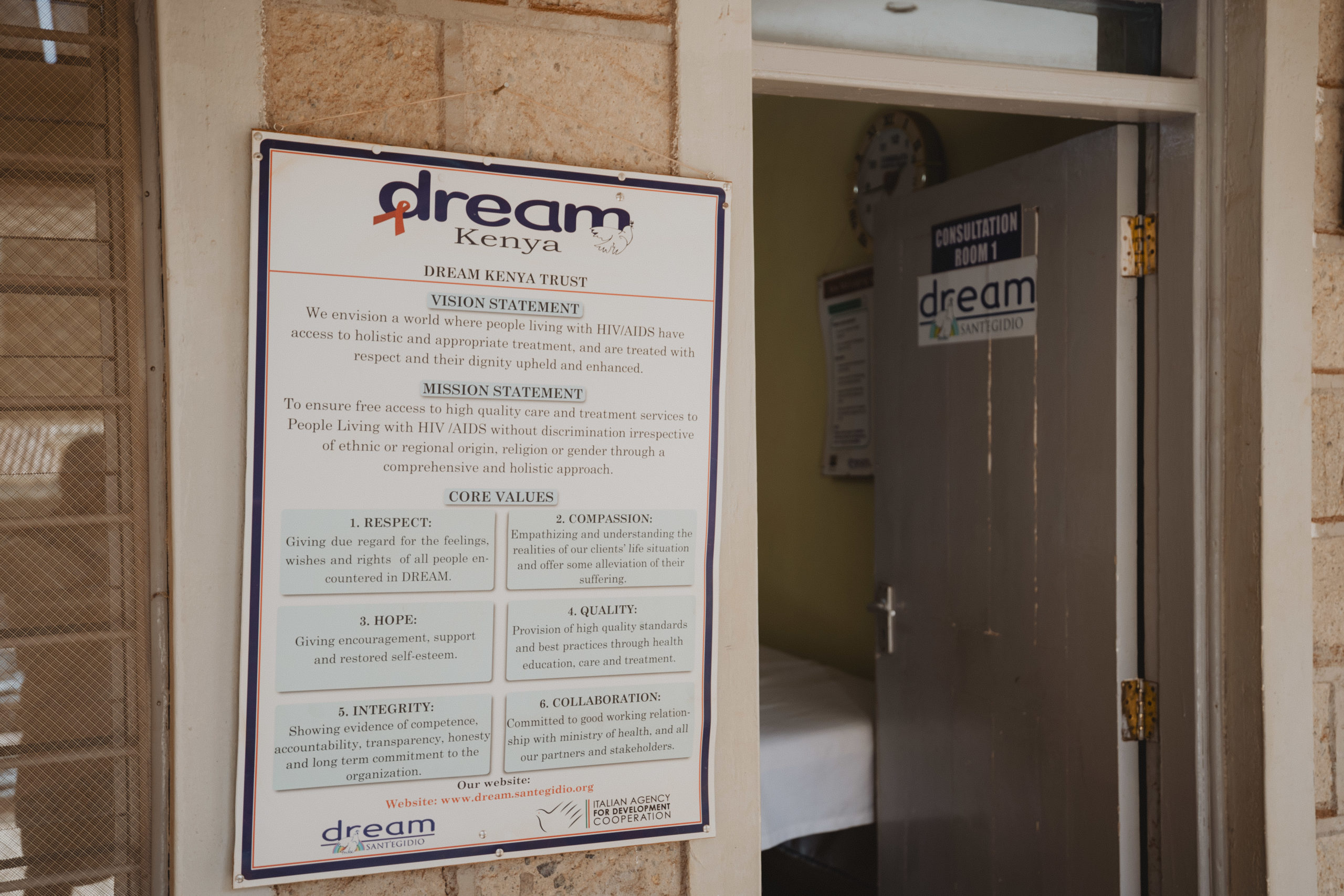Kenya: caring without leaving anyone behind
In Kenya, where drought, floods, and rising costs challenge millions of people, the DREAM Program of the Community of Sant’Egidio offers integrated care that bridges tradition and the future: HIV testing and treatment, mother-to-child prevention, TB, nutrition, women’s health, NCDs, telemedicine, and support groups. The most recent data show thousands of tests, viral suppression above 95%, cancer screenings, and nutritional pathways that protect the most vulnerable.
Kenya is a young and energetic country, stretching between the ocean and the highlands, organized into 47 counties that bring together fast-paced cities and villages suspended between drought and irregular rains. Here, where 80% of the territory lies in arid and semi-arid areas, families still depend on the seasons: when rain is scarce, harvests and livestock dwindle; when it comes suddenly, it sometimes floods and washes away bridges and fields. To these cycles are added rising living costs and global uncertainties. It is in this concrete context, made of people and daily choices, that the DREAM Program has worked for years, side by side with communities, to protect health and rebuild trust.
The strength of DREAM lies in the simplicity of things done well. The entry point is HIV: testing, counseling, early initiation of antiretroviral therapy, regular laboratory monitoring, and accompaniment that never leaves people alone. More than 11,700 people have chosen to be tested, many for the first time; over 200 discovered they were positive and, in the vast majority, were immediately linked to care: more than 91% started treatment right away. In the centers, more than 4,450 people are on therapy; nearly 3,700 have undergone viral load testing, with suppression rates above 95%. Behind these numbers are professionals and volunteers, but also very concrete practices: differentiated models of care to simplify life for stable patients, and contact verification at every visit to avoid losing anyone along the way.
Motherhood and childhood form a special chapter. Nearly 1,800 expectant mothers underwent HIV testing during prenatal visits; HIV-positive mothers followed safe pathways that continued through breastfeeding. Exposed children are monitored until final confirmation: nearly all test negative, proof that mother-to-child prevention works when the entire pathway is sustained, from the clinic to the home. In a country with a high TB burden, screening is systematic: over 50,000 people assessed, nearly 400 confirmed cases promptly started on treatment, and more than 260 HIV patients placed on TPT (Tuberculosis Preventive Therapy) to avert disease.
Health, however, is not just HIV and TB. In a season marked by food insecurity, nutritional assessment is an integral part of care: more than 8,500 people evaluated, hundreds of cases of severe and moderate acute malnutrition detected, personalized counseling, and food support when available. Women find in the centers a space for lifesaving prevention: nearly 1,900 cervical cancer screenings, rapid referrals for complex cases; in parallel, more than 1,600 breast exams and HPV vaccination for over 130 girls, including adolescents with HIV.
All this stands on the legs of the community. Nearly one hundred support groups have brought together adults, adolescents, and mothers, with meetings that address adherence, nutrition, stigma, and daily life.
Alongside tradition, there is the future. The digitalization of clinical flows and integration with national health information systems improve data quality and continuity of care; telemedicine connects specialists and peripheral centers; laboratories expand diagnostic profiles to meet new needs.
In the end, the DREAM Program in Kenya is this intertwining: the ancient art of caring and the modern ambition of doing so with data, quality, and dignity. In a country that is changing, between drought and sudden rains, between global markets and local solidarity, the promise remains the same: to leave no one behind.
Photography by Tomas Rodriguez
